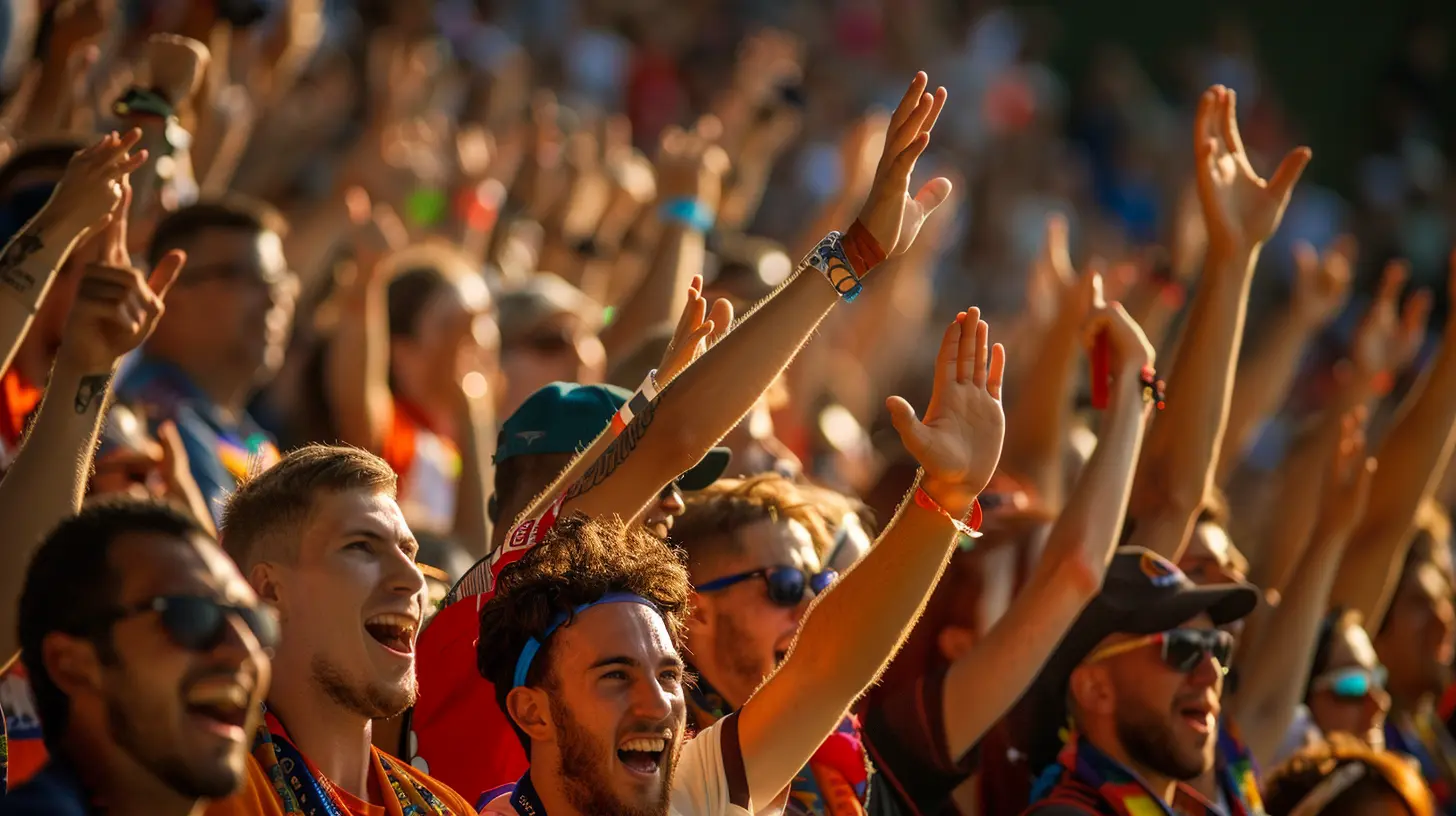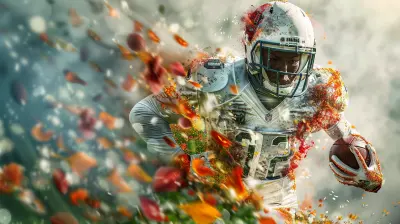The Role of Fan Culture in Soccer: How Supporters Shape the Game
29 July 2025
Soccer, or football as it's known in most parts of the world, is more than just a game. It's a global phenomenon that transcends borders, language, and culture. But what makes soccer truly special isn't just the 90 minutes on the pitch or the athleticism of the players. It’s the fans. The roar of the crowd, the chanting, the songs, and the sea of vibrant colors in the stands — all of it contributes to a unique atmosphere that sets soccer apart from other sports.
In fact, fan culture plays such a critical role in soccer that it often feels like supporters are just as important as the players themselves. They create the energy, the emotion, and, in many cases, the motivation for teams to push beyond their limits. But how exactly do fans shape the game? Let’s dive into the world of soccer fan culture and explore its impact on the beautiful game.

The Heartbeat of the Game: Passion and Loyalty
At the core of any soccer fan culture is passion. Unlike many other sports, soccer fans don’t just watch the game; they live it. From the moment they wake up on match day, their entire being is focused on supporting their team. Whether it's donning the club’s colors, gathering with friends at a local pub, or traveling hours to attend away games, soccer fans are deeply invested in the success of their teams.This passion often turns into unwavering loyalty. For many supporters, their allegiance to a team is lifelong. It’s not uncommon to hear of fans who have been following a club since childhood, often influenced by family traditions. Soccer teams become a part of their identity, a reflection of their community, and even a source of pride. Fans stick by their team through thick and thin, whether they're winning championships or battling relegation.
In this sense, soccer isn't just a sport; it's a way of life.

The 12th Man: How Fans Influence Performance
You've probably heard the term "12th man" used in soccer. It refers to the idea that the fans are like an additional player on the field, influencing the outcome of the game. This isn't just a metaphor — the energy that fans bring can genuinely affect the performance of a team.Think about it. When a team is playing at home, they usually have thousands of fans cheering them on, creating an environment that can be intimidating for the opposition. The noise, the chants, the atmosphere — it all adds up to a psychological boost for the home team. It’s no coincidence that many teams perform better in their home stadiums. The fans create a fortress-like atmosphere where opponents feel the pressure from the very first whistle.
On the flip side, fans can also put pressure on their own teams. Soccer supporters are known for being brutally honest when things aren’t going well. If a team is underperforming, it's not uncommon to hear jeers and boos from the stands. While this can be tough on players, it also serves as a reminder that the fans expect nothing less than full commitment. This pressure, both positive and negative, shows just how deeply fans are intertwined in the performance dynamics of the game.

Iconic Chants and Songs: The Soundtrack of Soccer
If you've ever watched a soccer match, you’ve probably noticed the constant singing and chanting that fills the stadium. These aren't just random shouts; they are carefully crafted anthems that have been passed down through generations. Every team has its own unique set of chants and songs that are sung by fans to show support, intimidate the opposition, or celebrate a victory.One of the most famous examples is Liverpool FC's "You'll Never Walk Alone." This song, sung by fans before every home game, has become a symbol of unity and strength. It resonates not just with the players, but with the entire global fanbase of the club. Songs like this create a deep emotional connection between fans and the team, turning a regular match into a shared experience that goes beyond the game itself.
Chants also serve another purpose: to get inside the heads of the opposition. It’s not uncommon for rival fans to mock each other with witty, and sometimes brutal, chants. This back-and-forth creates an added layer of drama and excitement to the game.
Rituals and Traditions: The Glue of Fan Culture
Soccer fan culture is rich with rituals and traditions that have been passed down through generations. These traditions vary from country to country, and even from team to team, but they all serve the same purpose: to create a sense of belonging and continuity among supporters.For example, in England, it’s common for fans to gather at pubs before a match to share a pint and discuss the game. In South America, fans often parade through the streets with drums, flags, and fireworks, turning the journey to the stadium into a carnival-like procession. In Germany, the fan culture is built around "ultras," dedicated groups of supporters who organize elaborate displays, such as massive banners and coordinated chants, to show their unwavering support for the team.
These rituals aren’t just about having a good time; they’re about creating a sense of community. Being a soccer fan means being part of something bigger than yourself. It’s about sharing highs and lows with thousands of others who feel the same way you do. And that's what makes fan culture so powerful — it connects people across generations, backgrounds, and even continents.
The Role of Social Media: Bringing Fans Closer
In the modern era, fan culture has expanded beyond the confines of the stadium and the local pub. Social media has opened up new avenues for supporters to engage with their teams and each other. Platforms like Twitter, Instagram, and TikTok have created virtual communities where fans can share their opinions, celebrate victories, and commiserate after defeats.For example, "fan cams" — where supporters share their live reactions to the game — have become a popular way for fans to connect with each other. These videos often go viral, showing the raw emotion that comes with being a soccer fan. Teams have also embraced social media, using it as a tool to communicate directly with their supporters, share behind-the-scenes content, and build a closer relationship with the fanbase.
Social media has also allowed fans to organize more efficiently. Whether it's coordinating chants, planning protests, or organizing charity events, the power of digital communication has made fan culture more dynamic and influential than ever before.
The Dark Side of Fan Culture: Hooliganism and Rivalries
While fan culture in soccer is mostly positive, there is a darker side that can’t be ignored. Throughout the history of the sport, there have been instances where passion crosses the line into violence and hooliganism. Intense rivalries between teams can sometimes lead to clashes between supporters, both inside and outside the stadium.One of the most notorious examples is the rivalry between Celtic and Rangers in Glasgow, Scotland. Known as the "Old Firm" derby, this match has a long history of sectarian conflict, with tensions between Protestant and Catholic communities fuelling the animosity between fans. While efforts have been made to curb violence and promote peaceful coexistence, the rivalry remains one of the most intense in world football.
Hooliganism, particularly in the 1980s, was a major issue in European soccer. Organized groups of violent fans, often referred to as "firms," would engage in fights with rival supporters, sometimes resulting in serious injury or even death. While authorities have taken steps to crack down on hooliganism, the remnants of this culture still exist in some parts of the world.
That being said, the vast majority of soccer fans are peaceful and simply want to support their team. However, the existence of hooliganism serves as a reminder that passion, when taken to the extreme, can have dangerous consequences.
The Impact of Fan Activism
Fans aren’t just passive observers of the game; they also have the power to bring about change. In recent years, fan activism has played a significant role in shaping the direction of soccer. Whether it's protesting against corrupt ownership, standing up against racism, or campaigning for better conditions for players, fans have shown that they can be a force for good.Take, for example, the 2021 protests against the European Super League. When a group of elite clubs announced plans to form a breakaway league focused on maximizing profits, fans across Europe united in opposition. Protests were held outside stadiums, social media campaigns were launched, and within days, the proposed league was scrapped. This showed just how powerful fan voices can be when they come together for a common cause.
Fan activism also extends to social issues. Supporters’ groups have been at the forefront of efforts to combat racism, sexism, and homophobia in soccer. Campaigns like "Kick It Out" and "Football Against Racism in Europe" have gained widespread support from fans, showing that the soccer community is committed to making the game more inclusive for everyone.

Conclusion: More Than Just Spectators
At the end of the day, soccer fans are more than just spectators. They are the heartbeat of the game, bringing passion, energy, and emotion to every match. They influence the performance of teams, create unforgettable atmospheres, and even shape the future of the sport through activism and protest.Without fans, soccer wouldn’t be the global phenomenon it is today. From the songs in the stands to the movements on social media, soccer fan culture is a powerful force that shows no signs of slowing down. So, the next time you watch a match, remember: it’s not just the players on the field who make the game special — it’s the supporters in the stands who truly shape the game.
all images in this post were generated using AI tools
Category:
SoccerAuthor:

Fernando Franklin
Discussion
rate this article
1 comments
Naomi Spencer
Fan culture is the heartbeat of soccer, shaping its identity and passion. Supporters transform the game into a vibrant community experience.
August 7, 2025 at 3:43 AM

Fernando Franklin
Absolutely! Fan culture is indeed vital, enriching soccer with a unique sense of belonging and passion that drives the sport forward.


